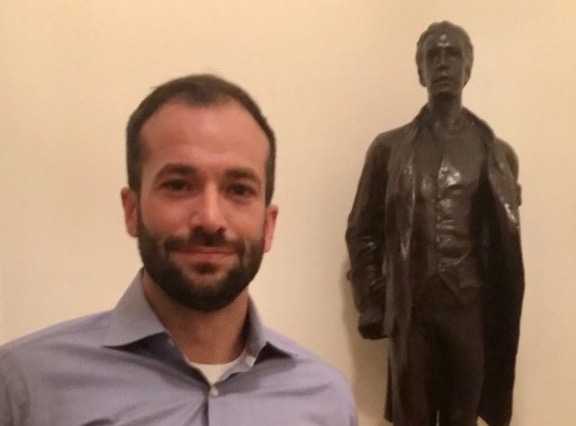America's first intelligence hero
- Jeff Rogg

- Dec 7, 2020
- 2 min read
At the corner of Vanderbilt Avenue and East 44th Street in New York City, a small plaque reads “At the British Artillery Park near this site Nathan Hale Captain in the U.S. Army, Yale Graduate of 1773, apprehended within enemy lines while seeking information, was executed on the morning of September 22, 1776. His last words were ‘I only regret that I have but one life to lose for my country.’” He was 21 years old.
The site of Hale's execution is actually unknown, but the plaque is fixed to the building that houses the Yale Club of New York. Hale was the first in a long-line of spies that Yale has produced. A statute of Hale also stands outside Connecticut Hall, Hale's former dorm on Yale's campus, and is copied at the CIA headquarters in Langley, Virginia. I also learned that my advisor at Ohio State, Jennifer Siegel, had the same statue as a bobblehead on her desk in her office in the Department of History.
Hale's mission took place at one of the low points in the Revolutionary War. George Washington and the Continental Army were trying to defend Manhattan from the British. Washington needed intelligence about the British forces on Long Island, so he looked for volunteers. Hale wasn't Washington's first choice, but no one else stepped forward. Even Hale's friends told him not to accept the mission! But the patriotic young Hale volunteered.
Hale was brave, but he was no spy. He made amateur mistakes on his mission, like using his real name, choosing a bad cover story as a schoolteacher, and failing to hide his intelligence notes. His downfall came when he met the famous Robert Rogers, who led "Rogers' Rangers," at a tavern. Hale, who was noble to the point of being gullible, trusted Rogers and told him about the whole mission over dinner. Hale was arrested, questioned, and then hanged for being a spy.
Hale's story shows how many problems in American intelligence history have their origins in the very beginning. Hale represented a tradition of amateur spies. For most of American history, the United States relied on amateur spies who volunteered to go on intelligence missions. Like Hale, they did not have any formal training in the ways of spying, known as tradecraft. It took the United States far too long to realize it needed professionally trained spies. Following in Hale's footsteps, many American spies tended to come from elite backgrounds (for example, Yale University). They would fill the ranks of the early CIA, leading Americans to view the Agency (as the CIA is known) as elitist. Finally, while James Bond and Jason Bourne and other fictional or historical accounts of intelligence now impress the American people, Americans have generally looked down on spies throughout U.S. history, just like Hale's friends. As a result of this suspicion, Americans were often suspicious of their own intelligence organizations. While some suspicion and even fear helps keep Americans on guard against intelligence abuses, excessive fear leads to paranoia. This spy paranoia helps explain the origins of conspiracy theories about a "Deep State" today. As Mark Twain said, "History doesn't repeat itself, but it often rhymes."

Source: Personal photograph




Comments